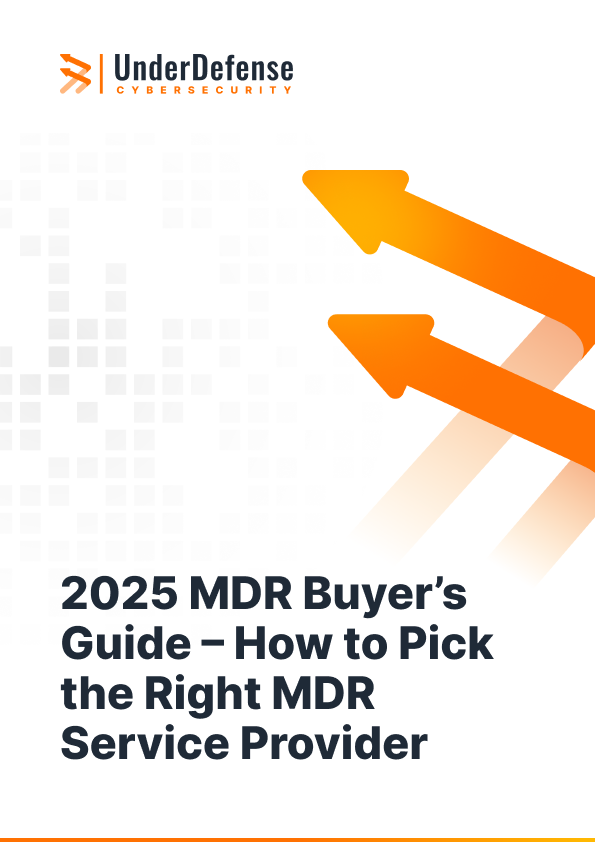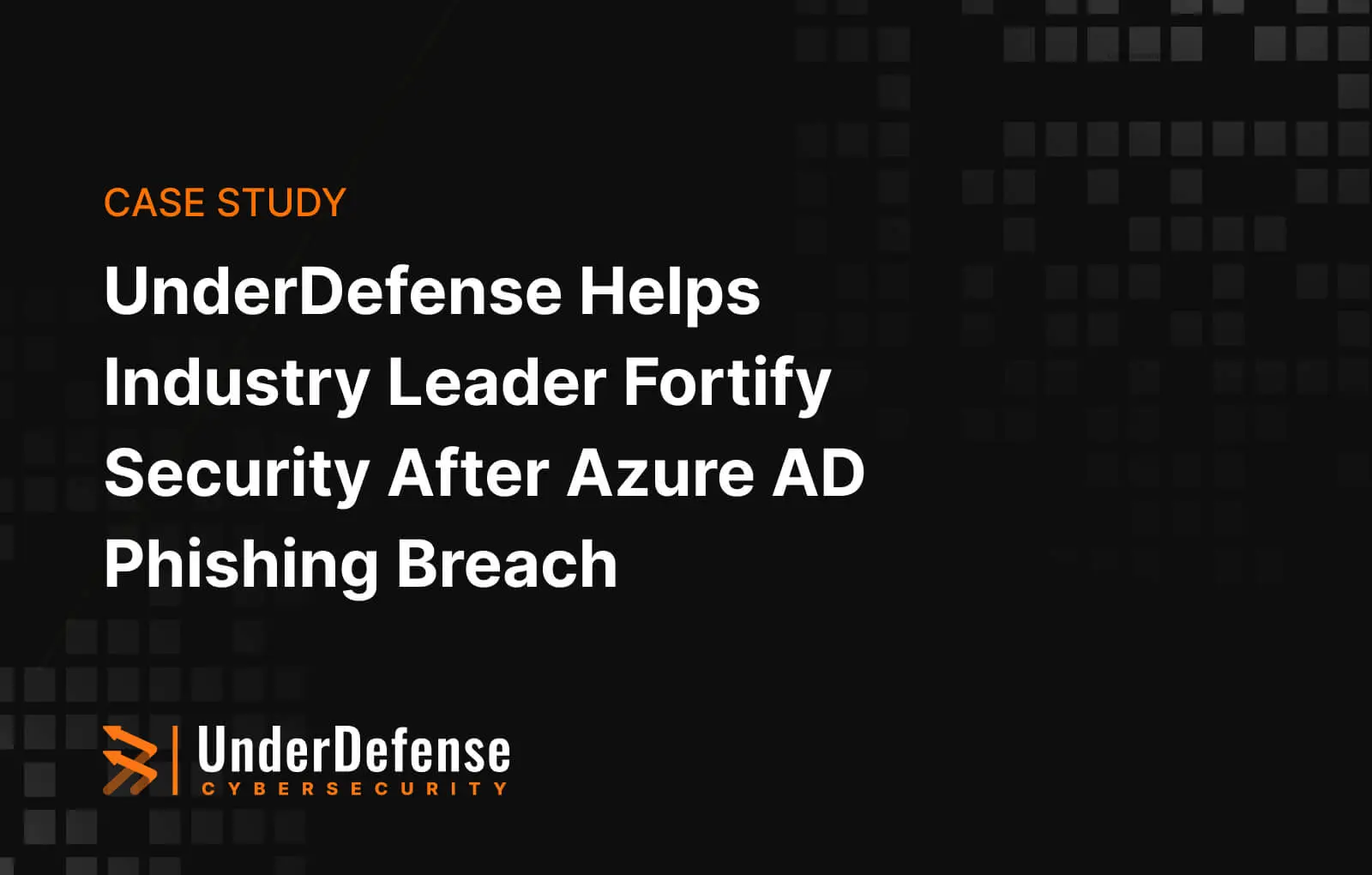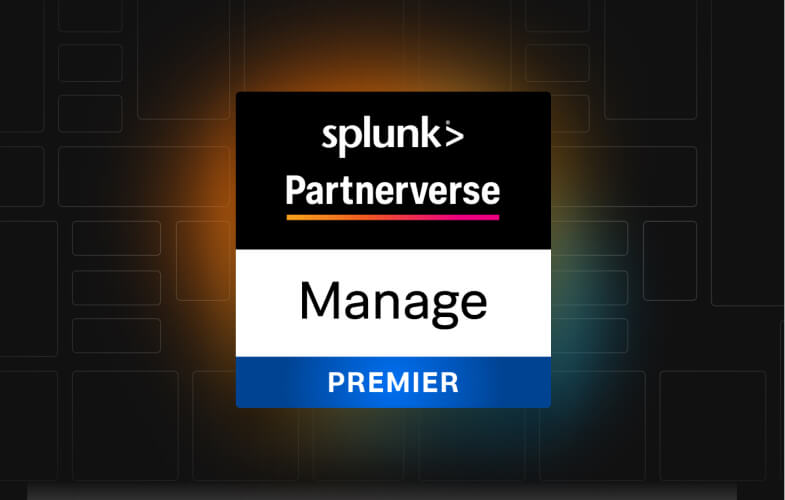Threat hunting is a proactive approach of searching networks, endpoints, and datasets to uncover hidden cyber threats that have bypassed traditional security measures. Threat hunting in cybersecurity is not just about reacting to alerts; it’s about actively seeking out malicious activities and advanced persistent threats that lurk beneath the surface, potentially causing significant damage if left undetected.
Cyber Threat Hunting Process
The threat hunting process is an iterative cycle that involves planning, data collection, analysis, and action to neutralize a threat. It’s a continuous loop of searching, learning, and improving security defenses. The process includes these threat hunting steps:
- Planning: Define the scope and objectives of the hunt.
- Data collection: Gather relevant data from various sources.
- Analysis: Examine the data to identify potential threats.
- Investigation: Look into any suspicious activity to confirm the presence of a threat.
- Response: Take appropriate action to contain and remediate the threat.
- Learning: Document your findings and improve future threat hunting steps.
Threat hunting is a key element of a well-rounded managed detection and response (MDR) service—especially when combined with expert analysts and the right tech. Check out our MDR Buyer’s Guide to help you choose the right partner to keep your business safe.
Get your Vendor-Agnostic MDR Buyer’s Guide

Threat Hunting Tools: Your Top 7 Choices
Cyber threat hunting tools are designed to proactively search for and identify malicious activities within a network. These threat hunting solutions collect, analyze, and investigate potential threats.
- Endpoint Detection and Response (EDR) solutions provide real-time monitoring and analysis of endpoint activity, allowing threat hunters to detect and respond to threats that may have slipped past traditional security measures.
- Security Information and Event Management (SIEM) systems aggregate and analyze security logs from various sources, providing a centralized view of security events and helping threat hunters identify suspicious patterns.
- Network Traffic Analysis (NTA) tools monitor network traffic for anomalies and suspicious behavior, allowing threat hunters to identify potential threats that may be communicating within the network.
- Threat Intelligence Platforms (TIPs) aggregate and correlate threat intelligence from various sources, providing threat hunters with valuable information about known threats and attack patterns.
- User and Entity Behavior Analytics (UEBA) tools establish baselines of normal user and entity behavior, allowing threat hunters to identify anomalies that may indicate malicious activity.
- Vulnerability scanners identify weaknesses in systems and applications that could be exploited by attackers. Threat hunters can use this information to proactively address vulnerabilities and reduce the attack surface.
- UnderDefense MAXI is a comprehensive threat hunting platform that integrates your existing threat hunting software into a cohesive security framework. It offers advanced analytics, threat intelligence integration, and automated investigation capabilities to streamline the threat hunting process.
CISO’s Expert Opinion
Tap into a unified service ecosystem where security experts and automation come together to defend against cyber threats.
Threat Hunting Techniques for Robust Cyber Defense
Cyber threat hunting techniques are the methodologies used to proactively track down and detect malicious activities within a network. Here are some common threat hunting techniques:
1.Hypothesis-Driven Hunting
This technique starts with a specific theory or suspicion about a potential threat. For example, a threat hunter might hypothesize that a new type of malware is present in the network based on recent threat intelligence.
2. Analytics-Driven Hunting
This approach uses advanced analytics and machine learning to identify unusual patterns or anomalies that could indicate malicious activity. It’s like using a high-powered microscope to find irregularities in a sample.
3. Intelligence-Driven Hunting
This threat hunting methodology leverages threat intelligence to identify known indicators of compromise (IOCs) and indicators of attack (IOAs) within the network. Intelligence-driven network threat hunting effectively uncovers deviations from the normal traffic, adversary techniques, and stealthy threats.
4. Situational Awareness-Driven Hunting
This technique of threat hunting is based on the understanding of the organization’s specific environment, assets, and risks. It’s about knowing your own backyard so well that you can spot anything out of place.
5. Reactive Threat Hunting
Reactive threat hunting is triggered by a known malicious event, typically after a data breach or theft is discovered. This approach to cyber threat hunting is focused on forensics and remediation.
6. Proactive Threat Hunting
Proactive threat hunting actively seeks out ongoing malicious events and activities inside the network to detect an in-progress cyberattack. The efforts are typically focused on detection and remediation.

7. External Threat Hunting
External threat hunting proactively seeks out malicious threat actor infrastructure to map and predict where cyberattacks are likely to emerge to prepare defensive strategies. The efforts are typically focused on Cyber Threat Reconnaissance, Threat Surface Mapping, and monitoring of third-party risks.
8. Insider Threat Hunting
Insider threat hunting focuses on detecting malicious activities originating from within the organization, whether intentional or unintentional. This is a critical aspect of cyber threat hunting, as insider threats can be particularly damaging and difficult to detect. It involves monitoring employee behavior, access patterns, and data-handling practices to identify any anomalies that could indicate malicious intent or compromised accounts.
Here’s a detailed breakdown of the key steps and tools used in these techniques.
Technique | Description | Steps | Tools |
Hypothesis-Driven | Starts with a specific theory about a potential threat. | 1. Formulate a hypothesis. 2. Gather relevant data. 3. Analyze data to validate or refute the hypothesis. 4. Identify the impact of the threat. | SIEM systems Threat intelligence platforms EDR solutions |
Analytics-Driven | Uses advanced analytics and ML to identify anomalies. | 1. Collect data from various sources. 2. Apply ML algorithms to identify anomalies. 3. Investigate anomalies. 4.Correlate findings with other sources to understand the threat. | UEBA tools Security analytics platforms ML frameworks |
Intelligence-Driven | Leverages threat intelligence to identify known IOCs and IOAs. | 1. Gather threat intelligence. 2. Identify relevant IOCs and IOAs. 3. Search for these indicators within the network. 4. Investigate matches to confirm a threat. | Threat intelligence platforms SIEM systems Vulnerability scanners |
See More
Situational Awareness-Driven | Based on understanding the organization’s specific environment and risks. | 1. Assess assets and infrastructure. 2. Identify critical systems and data. 3. Monitor for unusual activity. 4. Investigate if anomalies pose a threat. | Asset management tools Network monitoring solutions CMDBs |
Reactive Threat Hunting | Focused on forensics and remediation. | 1. Detect the threat’s potential impact. 2. Determine how the threat bypassed defenses and affected systems. 3. Isolate compromised assets and remove malicious software. 4. Restore systems and improve detection capabilities. | Forensics tools IR platforms SIEM systems |
Proactive Threat Hunting | Actively seeks out ongoing malicious events inside the network to detect in-progress cyberattacks. | 1. Build hypotheses based on attack patterns. 2. Analyze logs, endpoints, and network traffic. 3. Correlate findings with known IoCs and TTPs. 4. Contain threats and implement security improvements. | Network traffic analysis tools EDR systems SIEM solutions |
External Threat Hunting | External Threat Hunting | 1. Gather intelligence on adversary tactics and planned campaigns. 2. Identify potential attack vectors. 3. Strengthen defenses and response strategies. | Cyber threat reconnaissance tools Threat surface mapping software Third-party risk monitoring platforms |
Insider Threat Hunting | Detects malicious activities within the organization, intentional or unintentional | 1. Establish baseline behavior for users and systems. 2. Monitor for deviations from the baseline. 3. Investigate any suspicious activity. 4. Implement controls to prevent or mitigate insider threats. | UEBA tools DLP systems Access management tools |
Threat Hunting Frameworks that Work Best for Business
Threat hunting frameworks offer guidelines and best practices to streamline the threat hunting process. Some of the top examples include MITRE ATT&CK, Cyber Kill Chain, Diamond Model of Intrusion Analysis, and NIST Cybersecurity Framework.
- MITRE ATT&CK is a knowledge base of adversary tactics and techniques based on real-world observations. It helps threat hunters understand how attackers operate and identify potential threats within their networks.
- Cyber Kill Chain is a model that describes the stages of a cyberattack, from reconnaissance to data exfiltration. It is needed for security teams to identify where an attacker might be in the attack chain and proactively disrupt their activities.
- Diamond Model of Intrusion Analysis is a framework for analyzing the relationships between adversary, capability, infrastructure, and victim. It provides a way to understand the context of an intrusion and identify patterns that can be used to detect future attacks.
- NIST Cybersecurity Framework provides a comprehensive approach to managing cybersecurity risk. It includes guidelines for identifying, protecting, detecting, responding to, and recovering from cyber threats.
Managed Threat Hunting: Benefits and Capabilities
Managed threat hunting services provide you with the expertise and resources needed to proactively detect and respond to cyber threats.
- Improved threat detection: Uncover threats that bypass traditional security, utilizing skilled analysts to find hidden breaches and prevent potential attacks.
- Reduced attacker dwell time: Minimize the time attackers remain undetected by proactively searching for malicious activity. This helps you limit the potential damage caused by a cyberattack.
- Enhanced security posture: Identify and address security vulnerabilities, strengthening defenses and proactively reducing the risk of attacks.
- Cost savings: Prevent costly data breaches, avoiding expenses related to recovery, legal fees, and reputational damage.
- 24/7 monitoring and support: Ensure threats are detected and responded to promptly, regardless of the time of day or night.
- Expertise and experience: Get access to experienced security professionals and advanced tools for effective threat hunting.
- Scalability: Benefit from adaptable services that scale to meet the needs of your organization, regardless of size. Whether you’re a small business or a large enterprise, you can find a threat hunting service that fits your budget and requirements.
- Integration with existing security tools: Streamline the threat hunting process and security operations by unifying your existing security tools, such as SIEMs and EDRs, to provide a more comprehensive view of your security posture.
How MDR Drives Cyber Threat Hunting
Managed threat hunting may be further reinforced by Managed Detection and Response (MDR), which takes threat hunting to the next level. MDR and cyber threat hunting services differ in scope and approach. MDR offers a broader, outsourced cybersecurity service that includes threat hunting as a component, while threat hunting is a specialized practice focused on actively seeking out and identifying hidden threats.
Feature | MDR (Managed Detection and Response) | Threat Hunting Services |
Scope | Comprehensive cybersecurity service that includes monitoring, threat detection, and response. | Specialized service focused on proactively identifying and mitigating hidden threats. |
Approach | Combines technology and human expertise for continuous monitoring and response. | Actively seeks out threats using a blend of tools and human intervention. |
Key Components | Includes threat hunting, incident response, and security analytics. | Focuses on identifying unknown threats and vulnerabilities. |
Integration | Often integrates with existing security tools like EDR and SIEM. | Can be integrated with various security tools but is not limited to them. |
Expertise | Provides access to experienced security professionals. | Requires specialized threat hunting skills and expertise. |
Benefits | Offers 24/7 monitoring, rapid threat response, and cost savings by reducing the need for in-house security teams. | Enhances security posture by uncovering hidden threats and improving incident response capabilities. |
Target Audience | Suitable for organizations of all sizes, especially those lacking extensive cybersecurity resources. | Typically used by organizations with advanced security needs or those seeking to enhance their security capabilities. |
UnderDefense MDR offers top-level threat detection and response, helping you detect and contain threats in minutes—not hours or even days. Our high-caliber threat hunting team works around the clock to track down and eliminate even the most sophisticated threats that may have infiltrated your system.
Watch the video to see how the UnderDefense MAXI MDR platform empowers threat hunting, prevents breaches, and minimizes the consequences of attacks.
Want to dig deeper?
Compare MDR vs. SOC as a Service. They both offer outsourced cybersecurity solutions but with varying level of responsibility and expertise
1. What is the difference between incident response and threat hunting?
Threat hunting is proactive, searching for threats before they cause harm, while incident response is reactive, responding to threats after they have been detected. Threat hunting aims to uncover hidden threats, while incident response focuses on containing and remediating known incidents.
2. What skills are needed to be a threat hunter?
Threat hunters need a combination of technical skills, analytical skills, and a deep understanding of cyber threats. The key skills include knowledge of networking, security tools, threat intelligence, and the ability to think like an attacker. Threat hunting training is also essential for developing these skills.
3. How does threat intelligence enhance threat hunting?
Threat intelligence provides threat hunters with valuable information about known threats, attack patterns, and indicators of compromise (IOCs). This information helps them focus their efforts on the most relevant threats and improve their chances of detecting malicious activity.
4. What is the role of machine learning in threat hunting?
Machine learning can automate the detection of anomalies and suspicious patterns, helping threat hunters identify potential threats more efficiently. It can also be used to improve the accuracy of threat detection and reduce the number of false positives.
5. How can small businesses benefit from threat hunting?
Small businesses are often targeted by cyberattacks, so threat hunting is essential in protecting their systems. However, they may not have the resources to conduct threat hunting in-house. Managed threat hunting services can provide small businesses with access to the expertise and tools they need to protect themselves from cyber threats.
6. What is the role of cloud threat hunting?
Threat hunting in the cloud involves proactively searching for and identifying malicious activities within cloud environments. As more organizations migrate to the cloud, it’s essential to have threat hunting capabilities that can protect cloud-based assets and data.





